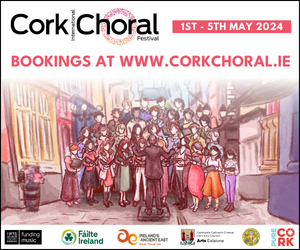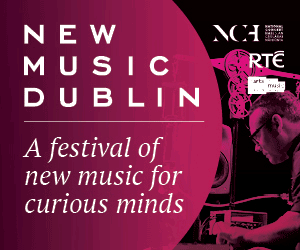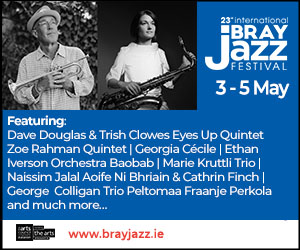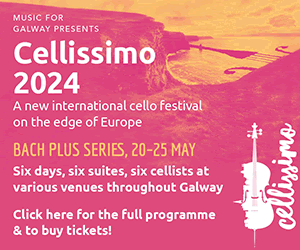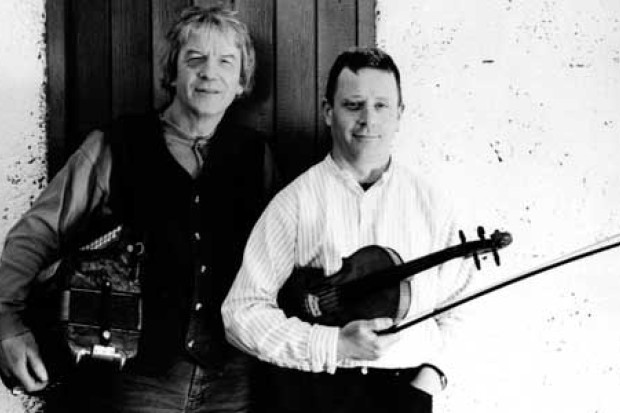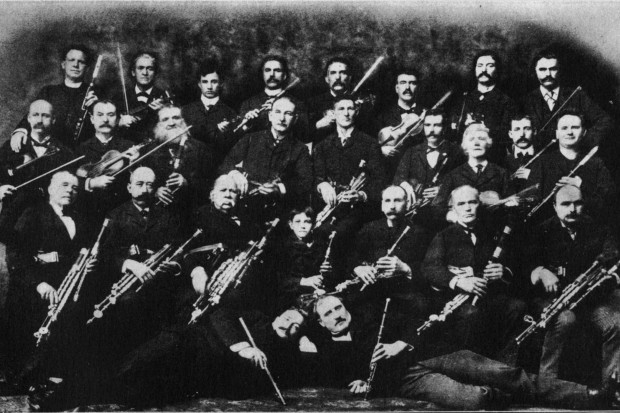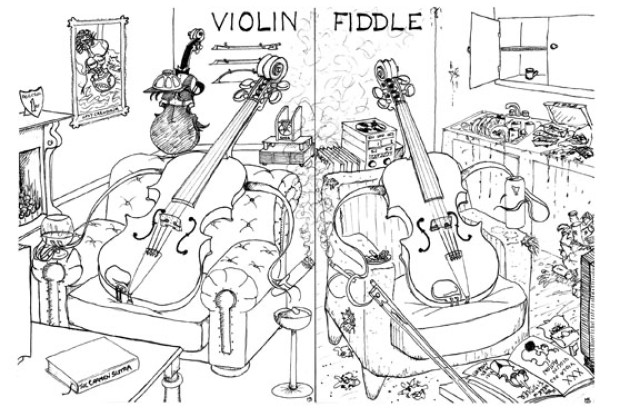The Real Alternatives
The Poet & The Piper – Seamus Heaney and Liam O’Flynn (Claddagh CCT21CD)
Live Recordings from the William Kennedy Piping Festival – Various (Armagh Pipers Club WKPFCD001)
Pre-Famine Ireland, according to the cliché, had a piper in every parish. Surprisingly, this is a testable claim. The number of parishes in Ireland, north and south, comes to around 2,500. Na Píobairí Uilleann has compiled a computerised archive of references in the literature to named pipers throughout Irish history. This yields a total of between 2,000 and 2,500 distinct names. Remember that this is covering at least six generations in some detail, with a smattering of references dating back to earlist times. It’s not a great fit, but taken with the constant references to (un-named) pipers in nineteenth-century Irish literature, it does seem as if pipers were almost as common then ‘as people are in London’.
The century following the Famine saw a steady decline in the instrument, so that by 1968, when just about all the known uilleann pipers in the world gathered in Bettystown, they numbered only around forty. Such has been the turnaround in its fortunes that there are now more than three thousand players of the instrument, concentrated in Ireland, Britain and anglophone countries, but also to be found in every corner of the world. A similar decline and recovery has taken place in the fortunes of various types of bagpipe across Europe.
What has not recovered is the place of the bagpipes in the life of the people. It was once the instrument of choice for every occasion in popular music; that role has now been usurped by the electric guitar, and the level of ignorance regarding bagpipes, throughout society, is staggering. There are indications of a turnaround in this situation, however, and these two recordings are products, and, let us hope, heralds of that recovery.
They are very different recordings. Meaning no disrespect to Liam O’Flynn – of the two recordings, The Poet & The Piper might be more expected to appeal to those music lovers who have no experience of the pipes, or no taste for them. His style is not that of the dance-hall or session, but of the considered musician who is playing music strictly for the ears, and whose appeal is to the intellect.
The album was prompted by a series of concerts that O’Flynn shared with Seamus Heaney, and the combination of poetry and music is sublime. The alternation of Heaney’s verse with O’Flynn’s chaste and so-musical playing, is a delight and calls to mind a best-ever instalment of the Radio One programme Sunday Miscellany. The so-called ‘gentlemen-pipers’ were a feature of the early history of the instrument in Ireland – leisured amateurs who considered themselves to be involved in serious music. One fancies that they would have aspired to sound like Liam O’Flynn. He plays mostly airs, with a sample of jigs, reels and hornpipes, on flat and concert pitch pipes and whistle. He manages to be enormously tasteful, musical and accessible while deploying all the touches and sensibility of the master piper. The airs include some of the most beautiful pieces in the Irish tradition – ‘Port na bPúcaí’, ‘Árdaí Chuain’, ‘An Bonnán Buí’, ‘Aisling Gheal’, ‘Sliabh Gallon’s Brae’ and ‘Crónán na Máthar’ – and they are superbly played, providing headline performances for any aspiring air-player. The dance tunes are taken at a moderate pace and are handled in a similarly assured manner. This is music to pay close attention to and to be enthralled by.
Heaney’s poetry, and his reading of it, are beyond any remarks of mine, and not properly the subject of this piece, focused as it is on the music of the pipes. It is no harm however to speak of his two translations included here — Cathal Buí Mac Giolla Gunna’s ‘An Bonnán Buí’ and Aogán Ó Rathaille’s ‘Gile na Gile’. In both of these Heaney manages to convey both the spirit and structure of the originals. In the case of ‘Gile na Gile’ this is no small task. After listening to Heaney’s version I would urge readers to read the original or have it read to them, both to appreciate Heaney’s achievement and to experience the awesome accomplishment of Ó Rathaille.
The notes, very suitably provided by poet/musician Ciaran Carson, are apposite and insightful. Carson brings the twin disciplines of verse and music to the appreciation of this recording, and he sets it, poetically, in its context in Irish history and life. One thing though — the air ‘Port na bPúcaí’ is not associated with County Clare but with the Great Blasket. Seán Ó Riada said that he had collected it from a former islander. There is more than a hint of mystery about this. The islander was never identified, and, when asked on one occasion if he had written it himself, Ó Riada refrained from either confirming or denying it. If it was his own composition it is a credit to him.
If The Poet & The Piper situates the uilleann pipes centrally in Irish culture, the other recording under review here – Live Recordings from the William Kennedy Piping Festival – reminds us how central to the European consciousness the sound of the bagpipes has been, and perhaps could be again. Found throughout Europe, as pipe, zak, gaita, zampogna, musette, cornemuse, biniou, and so on, the various species of the idea embody the range and variety of Europe’s music. The music presented here is taken from concerts at the very successful piping festival which has been run for the past decade by the Armagh Pipers Club. The players include pipers from Ireland, England, Scotland, Wales, Spain and Italy (in most cases the countries are represented by several different types of bagpipe). This list does not exhaust the possibilities. Every country in Europe has its own tradition/s (I have heard at least four different types of bagpipe in France).
The selection of music is remarkable for the variety to be found in just about every aspect: time, tempo and timbre – and the rest! Juxtaposition of the different instruments and styles allows the listener to realise just how misleading it is to lump all bagpipes together as similar instruments. There is more variety of tone and texture here than in the woodwind section of a symphony orchestra and, together with the differing musical genres and styles of playing, it should satisfy the heartiest and most eclectic musical appetite.
One item calls for particular comment — the bonus track, a part of The Singing Stream, a piece for four uilleann pipes composed by Niall Vallely and played by Cillian Vallely. This is a lovely, nicely structured piece of music, skillfully written and performed. It is not material for the session, but that’s no bad thing – perhaps the session has outlived its usefullness. An excerpt of a more substantial work, it makes me want to hear the whole. Perhaps the publishers would make it available? Like Liam O’Flynn’s playing, it brings piping to a different place and exposes possibilities that we are only beginning to discern, a generation after the start of the revival.
What can I say? Allow yourself to be convinced. There is so much bland music being peddled nowadays – various shades of grey all posturing as ‘the alternative’! These recordings are the real alternative. Ignore the preconceptions about bagpipes that you have been hobbled. This is a path into a different set of possibilities. Dare to take it. There is another landscape, different from the ones to which you are accustomed.
Published on 1 July 2004
Terry Moylan is a researcher and archivist with Na Píobairí Uilleann. He is the author of The Age of Revolution in the Irish Song Tradition 1776-1815.







